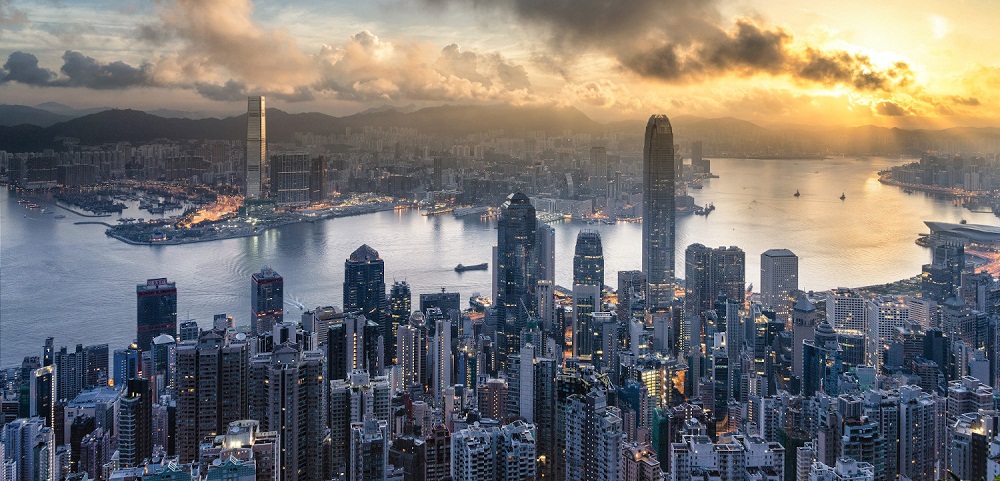Hong Kong, a beacon for free trade for 200 years, is catching a cold from the ill winds afflicting global trade around the world.
Much of the focus on the densely packed territory of 7.4 million this year has centred around pro-democracy protests and opponents of a plan to extradite criminal suspects to mainland China. The unrest is expected to continue into 2020, with no clear resolution in sight, although senior Beijing officials have been careful to signal that they’re not intent on harming trade.
Hong Kong is suffering from declines in tourism, trade and economic activity. It’s expecting its first budget deficit since 2004. Financial Secretary Paul Chan has predicted a recession, saying the economy will shrink 1.3% in 2019 compared to the year before.
But an analysis of trade data suggests that a bigger problem for Hong Kong is that the US – China trade war is eroding its status as the world’s most important transhipment point. Anything made in China is tainted for U.S. buyers, trade lawyers say, forcing manufacturers to route their supply chains through alternate markets such as Vietnam, Malaysia and Taiwan.
Even after a new trade deal concluded in mid-December, the U.S. still has tariffs on over USD 350 billion of a wide range of Chinese goods, including steel, aluminium, batteries and solar panels. Beijing has retaliated with tariffs on soybeans, automobiles and aircraft parts. Relations have been improving between Washington and Beijing, but the threat of more duties always looms, forcing manufactures to look at alternative supply chains, often bypassing Hong Kong.
Well over half of Hong Kong’s exports to the US are affected by US import tariffs. Chinese exports to the U.S. are down over 10% this year. The upshot: Chinese exports to Hong Kong shrank 8.9% to $225 billion in the first ten months of 2019, according to figures from Trade Data Monitor, the world’s top source of trade statistics.

Instead of going through Hong Kong, goods heading to markets in the US and Europe are instead transiting via other countries. Chinese exports to Vietnam, for example, were up 15.5% to USD 78.4 billion in the first ten months of 2019, according to TDM data. Exports to Malaysia and Taiwan were also up over 10% over that time.
For two centuries, Hong Kong has had a clear role as the place where Chinese goods go for final transformation before being shipped onwards. The United Kingdom first took over the island in 1841 and didn’t give it back to China until 1997. Over that time, Hong Kong built up one of the world’s great manufacturing bases, aided by a policy that eliminated almost all tariffs. It has few natural resources and must import almost all of what it consumes.
For decades, Hong Kong was mainland China’s bridge to the capitalist world, a place where Chinese business and political leaders could negotiate with Western companies. Now that China has its own capitalist infrastructure, it doesn’t need Hong Kong like it did in previous decades.
So what hope is there for Hong Kong?
Closer integration with China will bring some benefits. As China’s economy keeps expanding, its own consumers will buy more from Hong Kong. They’re already buying more from the island. In the first ten months of 2019, Chinese imports from Hong Kong increased 17.8% to USD 7.3 billion.
And lately, Hong Kong has been making its own way in the global trading system. It now has separate free-trade agreements with mainland China, New Zealand, Australia, the European Union’s free trade area, Chile, Macao, Georgia, the Maldives, and the Association of Southeast Asia Nations, or ASEAN.


